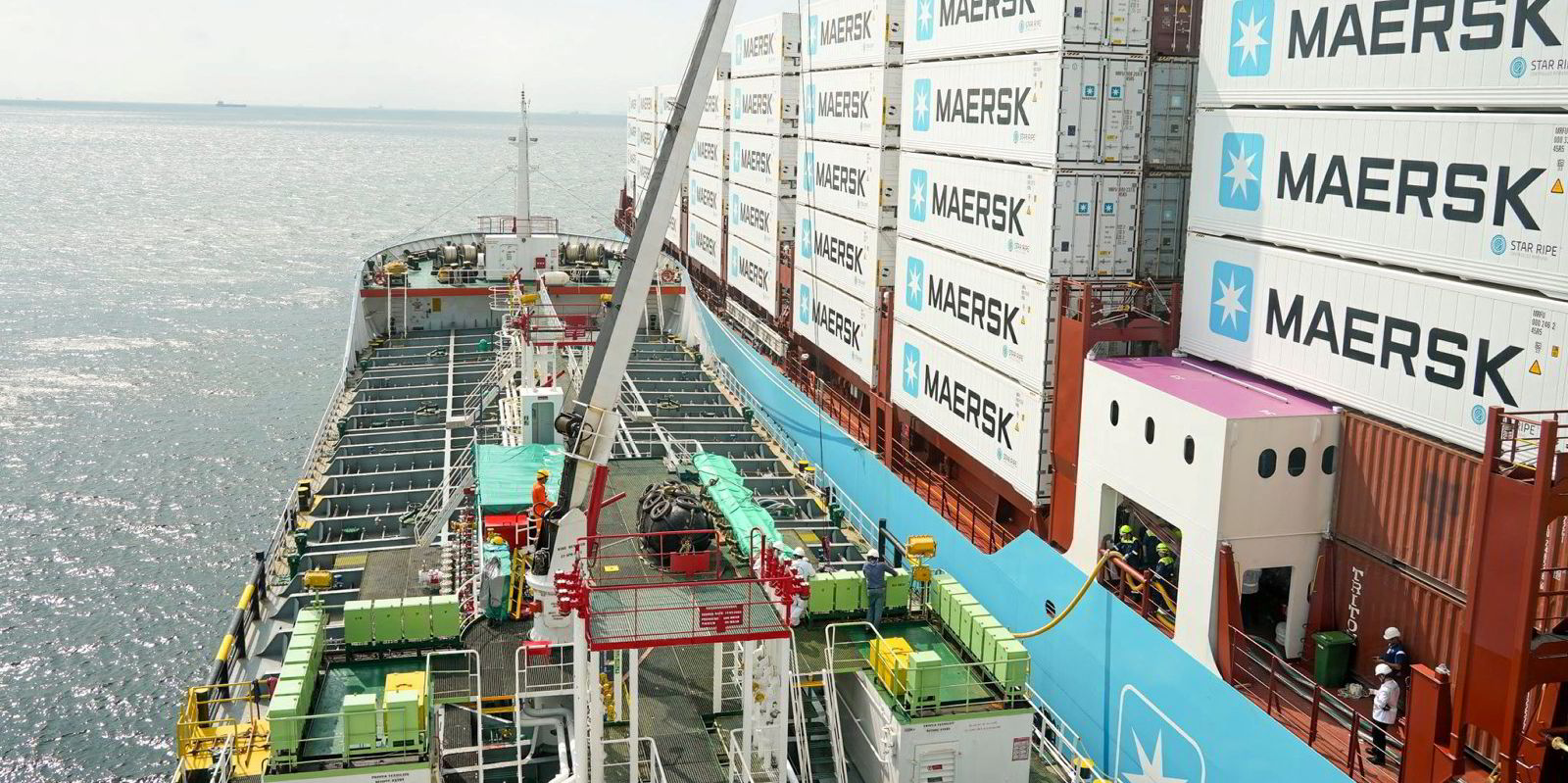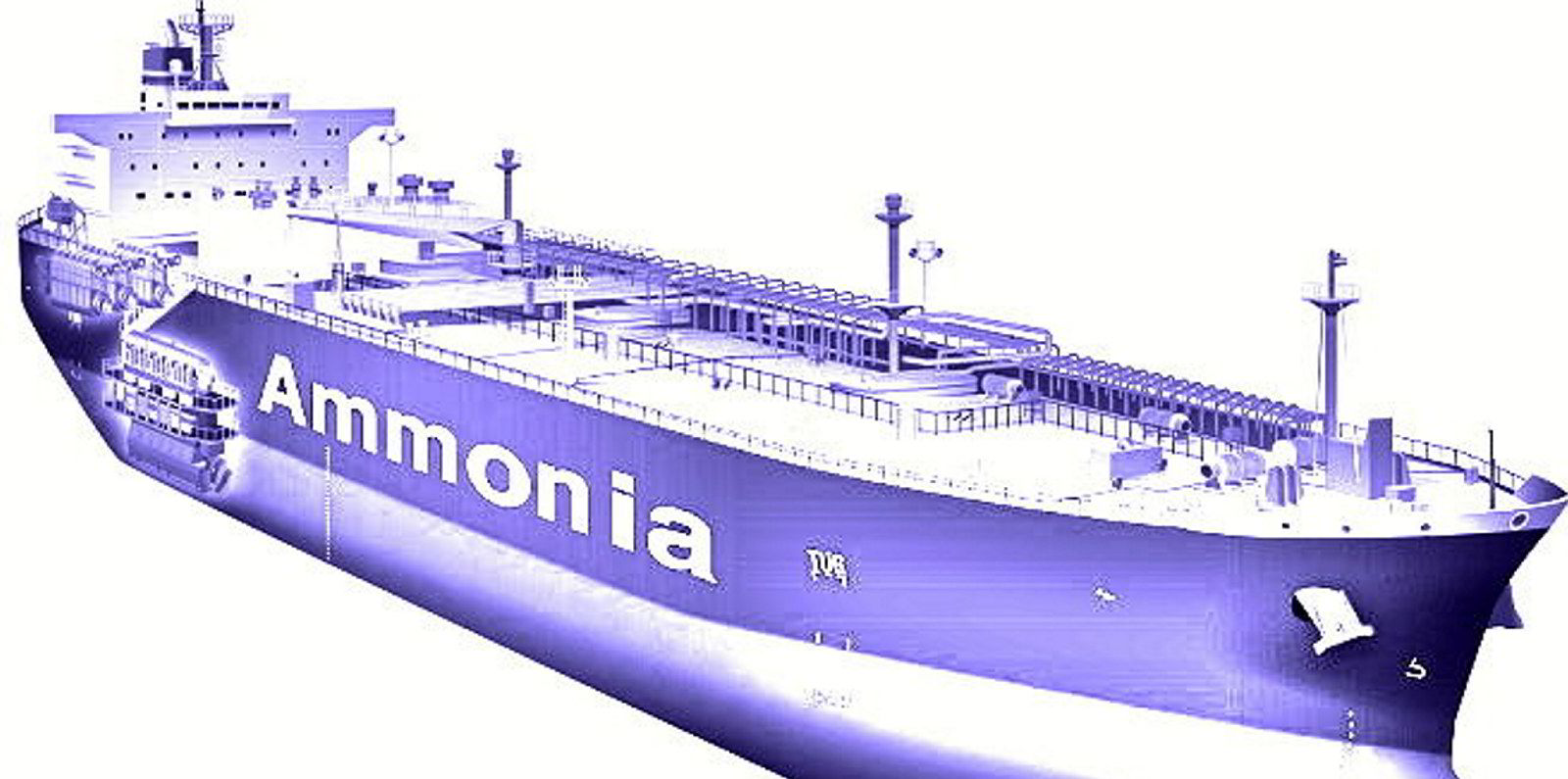What can we be sure about in 2024 when it comes to the conversation about the race to refuel shipping?
Let’s take a quick recap. Shipping has a new goal set by the International Maritime Organization, but a report from the same body has shown that the industry is not on track to meet this target.
Meanwhile, another United Nations entity, the United Nations Framework Convention on Climate Change, or UNFCCC, has now agreed to the phase-out of fossil fuels across society.
As TradeWinds wrote in November last year, for the IMO’s ambition to be fulfilled, shipping’s demand for new lower-carbon fuels in 2030 must hit half of that fossil fuel demand in 2022, according to projections.
This means 114m tonnes of fuel oil and diesel need to be replaced with less energy-dense fuel, suggesting much more than that amount of fuel will be needed in the eight years from 2022 and at a higher cost.
Experts point to the much-needed continuation of energy efficiency and therefore fuel-saving measures on board ships in any scenario but there is still the need for shipping to use the year ahead to speed up the search for large quantities of new fuels.
Some shipping companies have started to place their bets on specific horses. There are those backing green methanol and others ammonia when it comes to deepsea shipping, with hydrogen and electrification being largely talked about for coastal, shortsea fleets.
There are the onboard carbon capture supporters, hopeful of using current fuel mixes while stripping CO2 out of a ship’s exhaust, and the biofuel camp, in favour of using one of many different liquids or gases generated using organic resources.
There are other outliers, such as a trial in northern Europe on using a liquid organic hydrogen carrier with a solid oxide fuel cell, which will continue through 2024, and even some projects looking at using wind propulsion or nuclear but we will skip those in this preview.
Biofuel discussions in 2024 will depend on how talks in the IMO progress on lifecycle issues and make it simple for the industry to account for their origins.

Onboard carbon capture is also a topic for discussion at the IMO, and trials are set to run in the coming year. One company, Value Maritime, is already selling systems onto smaller coastal vessels where it can remove the collected CO2 and sell it to Dutch agricultural greenhouse owners.
But the real discussion about fuels for shipping must focus on what is happening ashore in 2024, not on board the ships.
This coming year will see the debate about how shipping can get access to the same fuels many other hard-to-abate sectors are seeking, especially as the UNFCCC has, for the first time, agreed that fossil fuels will need to be phased out.
Collaborate before competing
The focus that shipping needs to have in 2024 is on forming collaborative partnerships to secure fuel supplies, according to Carlo Raucci, a marine decarbonisation consultant and economist at the Lloyd’s Register Decarbonisation Hub.
He told TradeWinds there would be huge competition for green fuels as shipping competes with other industries but, at this early stage, these other industries are in the same position as shipping: there is little fuel available, no immediate demand, but huge demand emerging.
He sees regional offtake deals for hydrogen leading to the development of national or local hydrogen economies and with them the growth of ammonia and methanol production contracts, again on a regional basis.
Shipping, he added, needs to be in the mix, able to ensure the fuels are available when needed, and prepared for a new market dynamic as new energy hubs and energy producers emerge.
All eyes on hydrogen production in 2024
A report by the International Renewable Energy Association (IRENA) and World Trade Organization in December 2023 highlighted the need to transition current grey hydrogen production, 95m tonnes per year made from natural gas, to green production, and for that green production to increase fivefold by 2050.
IRENA said: “The report emphasises that green hydrogen production expansion will require the development of new supply chains. This will have implications, in terms of international trade of renewable hydrogen itself or commodities produced with it, as well as the trade of the necessary equipment and services along the value chain.”
Incidentally, a key bottleneck identified in scaling hydrogen production is the manufacture of electrolysers that take renewable electricity and purified water to generate hydrogen. These are like reverse fuel cells where the opposite catalytic reaction takes place.
AP Moller-Maersk, Euronav owner Compagnie Maritime Belge, Hoegh Autoliners and others are signing methanol and ammonia agreements, and in a notable move for shipping, also investing in fuel production facilities to secure their future supply in the face of potential competition — though few are for production to begin in 2024.
One is the Saverys’ family-led CMB joint venture in Namibia to generate 5 MW of green hydrogen using solar power in Walvis Bay. It intends to use this hydrogen to produce green ammonia for export and as an energy source. CMB chief executive Nicolas Saverys believes Namibia could become a bunkering hub for international trading vessels.
China is also investing heavily in green hydrogen production and as an example, one of the largest schemes to date is the Da’an project which aims to ramp up to 180,000 tonnes of ammonia annually after starting in 2024.
Saudi Arabia has projects too. The Neom green hydrogen and ammonia complex is targeting 1.2m tonnes a year, according to TradeWinds sister publication Hydrogen Insight.
And green methanol capacity is set to rocket in 2024, according to data from the Methanol Institute. What it calls a “running sum of capacity” in 2023 of about 750,000 tonnes a year will increase to about 2.5m tonnes a year over the next 12 months.
As these projects come online, they will create energy streams that shipping can tap into if the market conditions are right, but also create demand for increased cargoes of ammonia, methanol, hydrogen and CO2 to be shipped worldwide, another potential opportunity for the industry.






